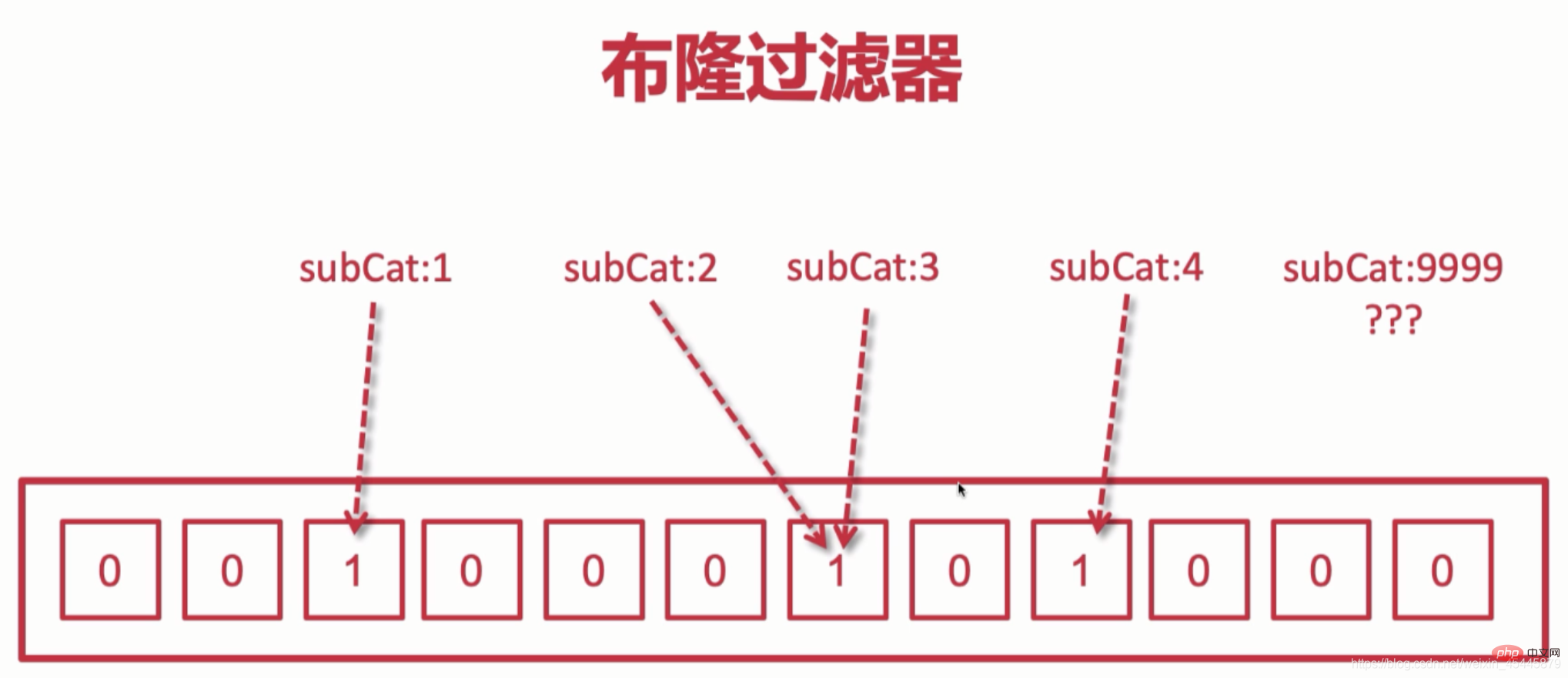How to solve redis cache avalanche and penetration
Solutions to cache penetration: 1. Cache empty data; 2. Use Bloom filters. 2. Solution to the cache avalanche: 1. Set the corresponding hotspot key to never expire; 2. Stagger the expiration time, use random generation for the expiration time, and set the expiration time of the hotspot data longer; 3. Combine multiple caches; 4. Procurement Third-party Redis.

The operating environment of this tutorial: Windows 7 system, Redis version 6, DELL G3 computer.
Solutions to Redis cache penetration and avalanche
1. Cache penetration
When the key queried by the user is in It does not exist in redis, and the corresponding ID does not exist in the database. At this time, it is attacked by illegal users. A large number of requests will be directly hit on the db, causing downtime and thus affecting the entire system. This phenomenon is called cache penetration. .
Solution 1: Also cache empty data, such as empty strings, empty objects, empty arrays or lists, the code is as follows
if (list != null && list.size() > 0) {
redisOperator.set("subCat:" + rootCatId, JsonUtils.objectToJson(list));
} else {
redisOperator.set("subCat:" + rootCatId, JsonUtils.objectToJson(list), 5*60);
}Solution Solution 2: Bloom filter
Bloom filter:
Determine whether an element is in an array, as shown below, using binary to store, The memory occupied is relatively small, 0 represents non-existence, 1 represents existence, and the adding query efficiency is very fast. When a value is saved, an algorithm will be used to save the corresponding value to a certain position on the collection of Bloom filters. There may be multiple keys. When a non-existent key value is passed in, it will be matched with the set. If it does not match, a null will be returned.
Disadvantages:
1, 1% The misjudgment rate, when a key does not exist in the Bloom array, but due to this misjudgment rate, it is judged that the key exists under certain circumstances. When the array is longer, the misjudgment rate is lower, and the shorter the array, the misjudgment rate is lower. The higher the rate
2. When we want to delete a certain key value, the content in our database and redis will be deleted, but it cannot be deleted in the Bloom array because there will be a certain position in the array. If we want to delete a pair of keys, we will change 1 to 0, but all key values will be deleted
3. The code complexity will also increase, because we have to maintain an additional set. When we use redis cluster, Bloom filter should be used in combination with redis

## 2. Redis cache avalanche
Cache avalanche: The data in the cache fails in large batches, and then this use requires a large number of requests. However, because all the keys in redis have failed, all requests will be sent to the db, causing downtimeSolution
1. Set the corresponding hotspot key to never expire[Related recommendations:2. Stagger the expiration time, the expiration time is randomly generated, and the hotspot data The expiration time can be set longer, and non-hot data can be set shorter
3. Combining multiple caches, for example: when a request comes in, you can request redis now, and then request memcache when it does not exist in redis. If it does not exist, go again. Request db
4. Purchase third-party Redis (redis on Alibaba Cloud or Tencent Cloud)
Redis video tutorial]
The above is the detailed content of How to solve redis cache avalanche and penetration. For more information, please follow other related articles on the PHP Chinese website!

Hot AI Tools

Undresser.AI Undress
AI-powered app for creating realistic nude photos

AI Clothes Remover
Online AI tool for removing clothes from photos.

Undress AI Tool
Undress images for free

Clothoff.io
AI clothes remover

Video Face Swap
Swap faces in any video effortlessly with our completely free AI face swap tool!

Hot Article

Hot Tools

Notepad++7.3.1
Easy-to-use and free code editor

SublimeText3 Chinese version
Chinese version, very easy to use

Zend Studio 13.0.1
Powerful PHP integrated development environment

Dreamweaver CS6
Visual web development tools

SublimeText3 Mac version
God-level code editing software (SublimeText3)

Hot Topics
 1389
1389
 52
52
 How to build the redis cluster mode
Apr 10, 2025 pm 10:15 PM
How to build the redis cluster mode
Apr 10, 2025 pm 10:15 PM
Redis cluster mode deploys Redis instances to multiple servers through sharding, improving scalability and availability. The construction steps are as follows: Create odd Redis instances with different ports; Create 3 sentinel instances, monitor Redis instances and failover; configure sentinel configuration files, add monitoring Redis instance information and failover settings; configure Redis instance configuration files, enable cluster mode and specify the cluster information file path; create nodes.conf file, containing information of each Redis instance; start the cluster, execute the create command to create a cluster and specify the number of replicas; log in to the cluster to execute the CLUSTER INFO command to verify the cluster status; make
 How to clear redis data
Apr 10, 2025 pm 10:06 PM
How to clear redis data
Apr 10, 2025 pm 10:06 PM
How to clear Redis data: Use the FLUSHALL command to clear all key values. Use the FLUSHDB command to clear the key value of the currently selected database. Use SELECT to switch databases, and then use FLUSHDB to clear multiple databases. Use the DEL command to delete a specific key. Use the redis-cli tool to clear the data.
 How to read redis queue
Apr 10, 2025 pm 10:12 PM
How to read redis queue
Apr 10, 2025 pm 10:12 PM
To read a queue from Redis, you need to get the queue name, read the elements using the LPOP command, and process the empty queue. The specific steps are as follows: Get the queue name: name it with the prefix of "queue:" such as "queue:my-queue". Use the LPOP command: Eject the element from the head of the queue and return its value, such as LPOP queue:my-queue. Processing empty queues: If the queue is empty, LPOP returns nil, and you can check whether the queue exists before reading the element.
 How to use the redis command
Apr 10, 2025 pm 08:45 PM
How to use the redis command
Apr 10, 2025 pm 08:45 PM
Using the Redis directive requires the following steps: Open the Redis client. Enter the command (verb key value). Provides the required parameters (varies from instruction to instruction). Press Enter to execute the command. Redis returns a response indicating the result of the operation (usually OK or -ERR).
 How to use redis lock
Apr 10, 2025 pm 08:39 PM
How to use redis lock
Apr 10, 2025 pm 08:39 PM
Using Redis to lock operations requires obtaining the lock through the SETNX command, and then using the EXPIRE command to set the expiration time. The specific steps are: (1) Use the SETNX command to try to set a key-value pair; (2) Use the EXPIRE command to set the expiration time for the lock; (3) Use the DEL command to delete the lock when the lock is no longer needed.
 How to read the source code of redis
Apr 10, 2025 pm 08:27 PM
How to read the source code of redis
Apr 10, 2025 pm 08:27 PM
The best way to understand Redis source code is to go step by step: get familiar with the basics of Redis. Select a specific module or function as the starting point. Start with the entry point of the module or function and view the code line by line. View the code through the function call chain. Be familiar with the underlying data structures used by Redis. Identify the algorithm used by Redis.
 How to use the redis command line
Apr 10, 2025 pm 10:18 PM
How to use the redis command line
Apr 10, 2025 pm 10:18 PM
Use the Redis command line tool (redis-cli) to manage and operate Redis through the following steps: Connect to the server, specify the address and port. Send commands to the server using the command name and parameters. Use the HELP command to view help information for a specific command. Use the QUIT command to exit the command line tool.
 How to solve data loss with redis
Apr 10, 2025 pm 08:24 PM
How to solve data loss with redis
Apr 10, 2025 pm 08:24 PM
Redis data loss causes include memory failures, power outages, human errors, and hardware failures. The solutions are: 1. Store data to disk with RDB or AOF persistence; 2. Copy to multiple servers for high availability; 3. HA with Redis Sentinel or Redis Cluster; 4. Create snapshots to back up data; 5. Implement best practices such as persistence, replication, snapshots, monitoring, and security measures.




